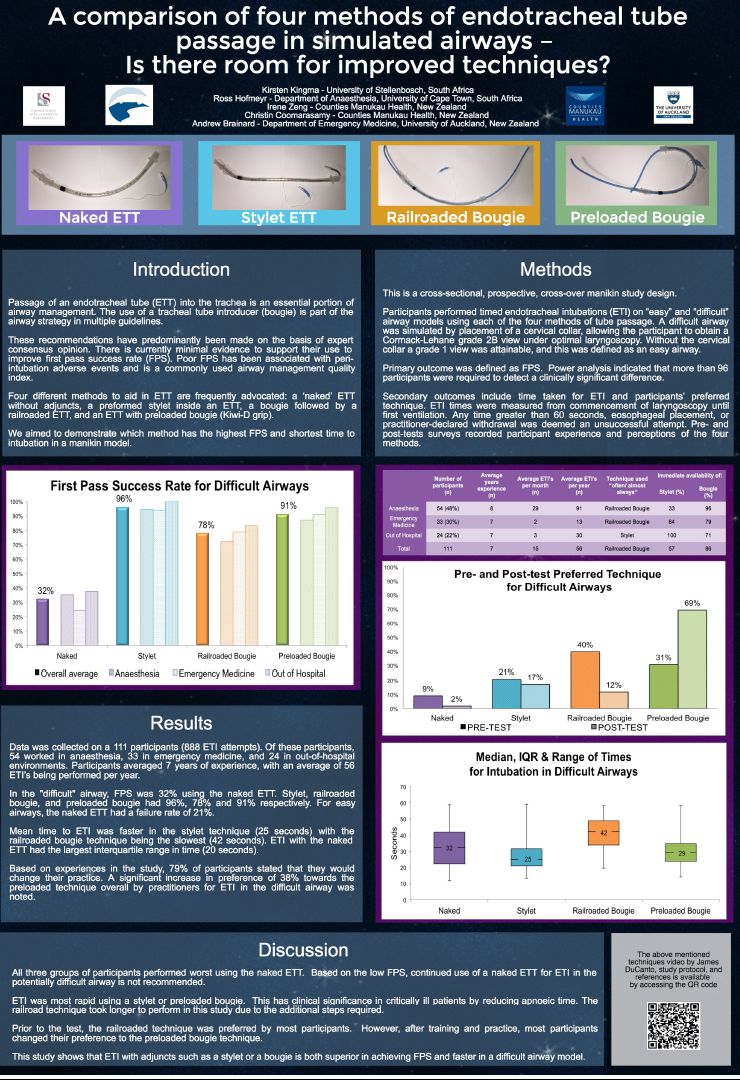Technique for using the Aintree Intubating Catheter (AIC) to exchange between a supraglottic airway (SGA) and endotracheal tube (ETT). This is typically required when an airway has been ‘rescued’ with an SGA that is not designed for direct intubation, with a narrow internal diameter or obstructions. The Aintree has a length of 55cm, internal diameter of 4.8 mm (not 4.2 as stated in the video) and external diameter of 6.0 mm, allowing a paediatric fibrescope or flexible intubating vide endoscope (preferably 4 mm or less) to be passed through the AIC, into the trachea, and then an ETT railroaded after removal of the SGA over the AIC. If that sounds confusing, watch the video!
Tips/tricks/advice/critique? Leave a comment!
The Difficult Airway Society (DAS) have a nice poster guide to help you remember how to do this – click the image below to open/download. (Open access).

